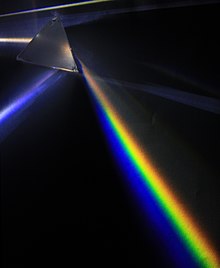A Physicist is Studying Light Absorbance in the Ocean

Optical properties of an underwater light sensor and the effects of depth on their behavior are among the topics being studied by a physicist. The results are a promising step toward the development of new underwater technologies for monitoring and predicting ocean light pollution. Scientists have been looking into how sunlight can affect the environment of the ocean for years, but the study of light absorbance in the ocean is only the most recent.
Cindy Lee Van Dover
The research of Dr. Cindy Lee Van Dover involves light absorbance at a deep depth. She began her quest in 1986, while working at the Woods Hole Oceanographic Institution in Cape Cod. The Institute had recently discovered the first vent in the Atlantic. Her adviser had discovered a way to preserve gray shrimp. Her musings prompted further research. Van Dover has received several grants, including one from the National Science Foundation.
In the 1990s, Van Dover described a novel photoreceptor in a vent invertebrate. Her work led to the discovery of geothermal light at vents, as well as biological significance investigations. In 1990, Van Dover joined the group of scientists that operates the deep-diving submersible ALVIN. She was a pilot-in-command on 48 dives, and her work has taken her to most of the known vent fields in the Atlantic. She has also conducted studies at deep-water seamounts and significant features of the ocean floor.
Optical properties underwater sensor
The intrinsic optical properties of water are fundamental clues to many areas of research, including underwater imaging. The ideal methods for measuring these properties are beam transmissometers and optical sensors. However, a more realistic method involves imaging underwater conditions and using a deep artificial neural network to estimate these properties. These approaches have been used successfully in the image processing and computer vision fields, and they are proving to be an efficient method for estimating the inherent optical properties of water.
Optical properties of water are largely determined by processes of absorption and scattering. The amount of OACs present in water determines the IOP, as well as the spatial variation of these properties. These two processes result in a variety of optical properties, including reflectivity, refraction, and extinction. Additionally, the type of incident light field also plays a major role in determining the IOPs.
Effects of depth on light absorbance
Different wavelengths of light have different levels of penetration into water. This phenomenon is called light absorption. Red, blue, and green light, for example, disappear at depths of less than 15 feet. By comparison, blue light disappears at deeper depths, as does yellow and orange light. Even in deep oceans, colored objects become distorted and change their appearance as they descend. Using this resource, students can develop models for light absorption by studying the wavelengths of light in different depths.
Optical researchers are working on new technologies to measure ocean temperatures to help solve pressing environmental problems. These technologies will eventually enable scientists to measure the amount of light that passes through a layer of water and how much it absorbs. These researchers are led by Tommy Dickey, the Secretary of the Navy/Chief of Naval Operations Chair in Oceanographic Sciences at the University of California, Santa Barbara.
Optical properties of trichodesmium spp.
To investigate the optical properties of Trichodesmium spp., a physicist has used measurements of the spectral absorption, fluorescence, and oxygen evolution action spectra. These measurements suggest the presence of a new model to explain the observed variation in the species’ optical properties. The study also discovered the presence of a double peak in the absorption spectrum due to a compound called mycosporine.
Using the same method as in the previous study, the physicist also studied the tidal phase. The samples were collected over a twelve to twenty-four-hour cycle during spring tides, and the discharge from the Fitzroy River was negligible during the surveys. The tidal effect, meanwhile, was not present in the samples taken during the surveys.




Leave a Reply